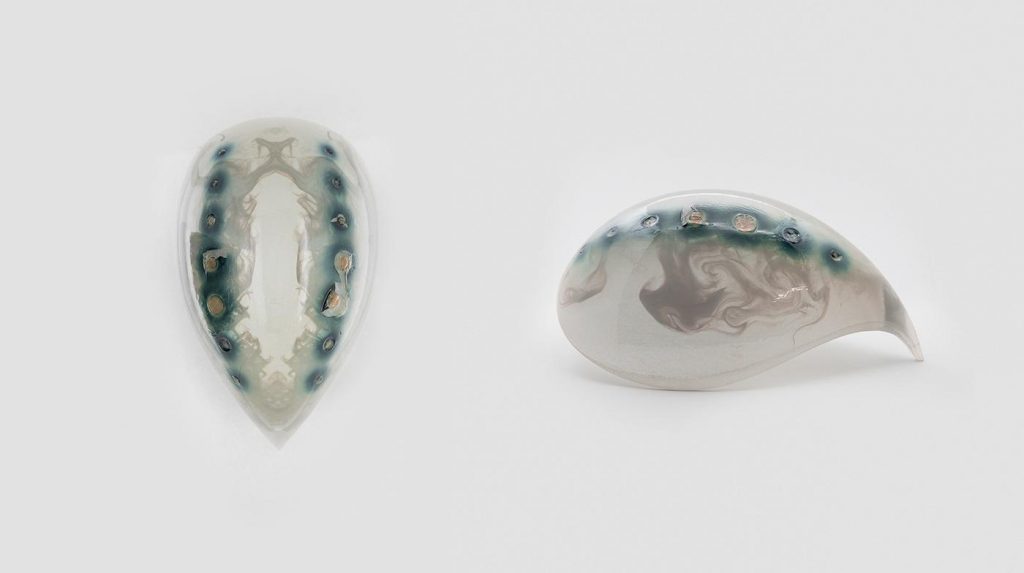The project I chose to look at is a part of the Vespers series, a collection of 3D-printed death masks created by Neri Oxman and her Mediated Matter Group at MIT.

The three series within the Vespers collection represents the past, the present, and the future, as the first series explores traditional death masks, and the concept of containing the wearer’s last breath, the second series is the metamorphosis or transition between death masks as an ancient relic and a more contemporary interpretation, and the third series creates an environment that guides and informs gene expression, in the sense that microorganisms inside the mask can produce chemicals that can help their users. In order to meld the masks from all three series together, the team used spatial mapping algorithms to transform the different geometries and colorations from the first series to the second and the second to the third.

One of the five masks from the third Vespsers series, “Future, the Biological World” 
A close up of the mask shown on the left, each mask in the third series contains living microorganisms
I found the third series, “Future, the Biological World” particularly interesting, as not only are the five 3D-printed masks, or “biological urns” beautiful and elegant, but they capture the balance between life and death both visually and physically, through their functions. Using bioactive materials that they then 3D-printed using a Stratasys Objet500 Connex3 multi-material 3D printer, the Mediated Matter Group synthetically engineered microorganisms to produce specific pigments or chemical substances like antibiotics or vitamins. The masks are not only tailored to the physical features, but also to an individuals genetic makeup and their environment, opening up the possibilities for wearable interfaces and skins in the future.
![[OLD FALL 2019] 15-104 • Introduction to Computing for Creative Practice](https://courses.ideate.cmu.edu/15-104/f2019/wp-content/uploads/2020/08/stop-banner.png)